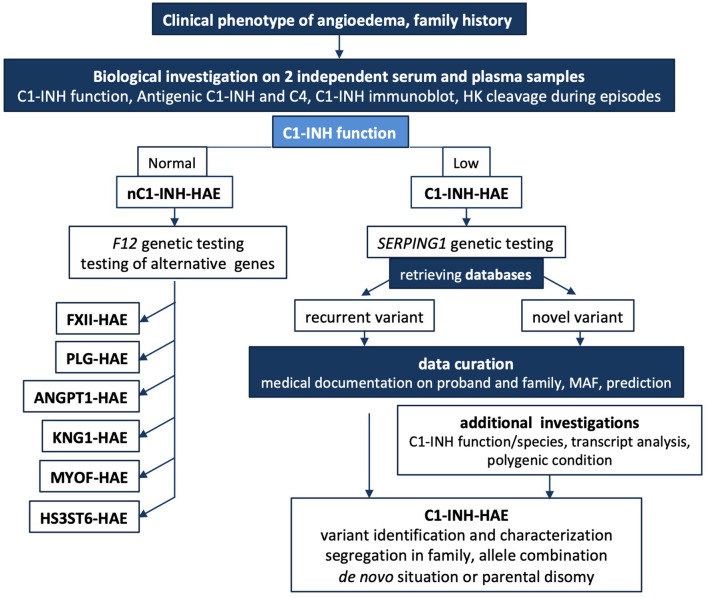Figure 6.
Short algorithm for C1-INH-HAE. The medical algorithm of Caballero et al. (108) is supplemented for biological and genetic additional testings. In cases where there is a family history of HAE or the clinical history is highly suggestive of HAE, biological investigation should begin with an assessment of the established C1-INH function after 2 independent determinations on plasma; this mandatory testing can be completed by C1-INH molecular species and in some instances by high molecular weight kininogen cleavage to establish the involvement of KKS. A low antigenic C4 in serum could contribute to biological diagnostic, but false positives should be considered because C4A and C4B null alleles are common. A normal C1-INH function could suggest a nC1-INH-HAE and F12 genetic study should be performed. When unsuccessful, alternative genetic testing could be developed. SERPING1 genetic testing can confirm a C1INH-HAE diagnosis. Medical geneticists investigate a possible de novo mutation or a parental disomy on additional DNA analyses. In case of intronic variant detection, transcript distribution is investigated for noncanonical sequences. Data curation is mandatory for every novel variant submitted to sequence interpretation according to ACMG guidelines (57, 58). C1-INH-HAE, hereditary angioedema with C1-INH deficiency; nC1-INH-HAE, hereditary angioedema with a normal C1-INH function; F12-HAE, with gain-of-function of FXII; PLG-HAE, with gain-of-function of plasminogen; ANGPT1-HAE, with altered angiopoietin-1; KNG1-HAE, with high molecular weight kininogen susceptible to cleavage; HS3ST6-HAE, with altered heparan sulfate-glucosamine 3-O-sulfotransferase 6; MYOF-HAE, with altered myoferlin; HK, high molecular weight kininogen; MAF, minor allele frequency.

